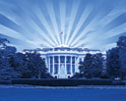I recently had the opportunity to meet with roofing industry leaders in Japan and China, and if any of you have lingering doubts about the globalization of our industry, I assure you they can—and should—forcefully be put to rest.
What was most remarkable about the meetings was the topics we covered were wholly unremarkable. We talked about the emergence of energy and environmental issues; government incentives and mandates affecting the roofing industry; opportunities for expanded trade; and—in China—new FM Global requirements for wind-uplift testing.
To be sure, there are important differences. Built-up roofing still has significant market share in Japan where TPO is scarcely known. EPDM is just beginning to gain popularity in China where torch-applied systems generally are outlawed. And the preponderance of concrete buildings in both countries has created an entirely different set of design and performance issues from what we are used to in the U.S.
There certainly are differences, too, between the roofing industries of Japan and China. The most astounding difference is that China's construction industry still is growing at a double-digit pace with not the slightest prospect of a slowdown in the foreseeable future.
Thirty million Chinese people are moving each year from rural to urban areas, and 400,000 automobiles are being added annually to the traffic flow in Beijing alone.
We talk in the U.S. about the need for infrastructure spending, but our needs don't come close to China's: A new high-speed rail system connecting Beijing and Shanghai includes a bridge that is 120 km (about 75 miles) long, and the new National Opera in Beijing opened earlier this year. Its cost: $400 million. Our infrastructure spending makes it seem like we're building swing sets in schoolyards while the Chinese are building giant amusement parks.
And yet, the single most striking impression from these visits is how incredibly well people in the roofing industry get along. That's always been true in the U.S. in part, I think, because the industry is fragmented enough to allow interaction among peers who don't compete with one another. But it's especially true in an international environment where we all understand we have a lot to learn from one another.
When the Japanese offer a toast, they say "campai" and pronounce it "kam pie." When the Chinese offer a toast, they say "campai" and pronounce it "kam pay." Subtle differences remain at all levels. But we all still know how to toast one another, and we do it well. Campai.
Bill Good is NRCA's executive vice president.



